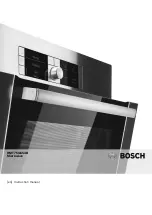
PURPOSE
The microscope is intended for observation of the transparent specimens by
transmitted light against a bright field in taking up natural sciences in schools or other
educational establishments as well as for various researches in laboratory practice.
STANDARD EQUIPMENT
Microscope with zoom eye-piece and objective
lenses:………………………………………………….
1
8
x
…………………………………………………….…………..…
1
20
×
…………………………………………………………………….
1
40x……………………………………………………………………
1
Wrench ………………………………………………………………
1
Napkin .……………………………………………………………..
1
Slide ..………………………………………………………………
3
Cover ..………………………………………………………………
1
Packing case …………………………………………………………
1
Certificate ………………………………………………………….
1
SPECIFICATIONS
Magnification ……………………………………………...80x-160x, 200x-400x, 400x-800x
Field of view .mm ……..……………………………………………………………….0.2-2.0
Achromatic lenses ………………………………………………….8x0.20, 20x0.40, 40x0.60
Zoom eye piece ………………………………………………………………………10x-20x
Weight, kg, max ……………………………………………………………………………1.4
Overall dimensions, mm, max ……………………………………………………11x150x340
DESIGN
In transmitted-light mode of operation a beam reflected from a concave mirror and passed through a diaphragm and a
microscope slide illuminates the transparent specimen covered with a cover glass. Lenses 8x or 20x form an image of the
specimen in the focal plane of the zoom eyepiece. The microscope magnification is the product of the objective
magnification and the eyepiece magnification. The microscope consists of the following main parts: a base , a drawtube
holder bracket, a specimen stage with a tilting mechanism, a turret with lenses, a drawtube with a zoom eye-piece. N o t e :
Since efforts are continually made to improve the reliability and performance of the microscope minor changes may be
introduced in its design without special notice in this Manual.
PREPARING FOR OPERATION
After transportation (or storage) at low temperatures the packaged microscope should be kept indoors at a temperature of
20
±
5
°
C for at least 4 hours.
Unpack the microscope; screw the drawtube into the drawtube holder and the instrument is ready for operation.
OPERATING PROCEDURE
Install the microscope on the working table with its stage arranged from you. Tilt the drawtube holder to a position
suitable for operation. The force to be applied for turning if required is adjusted by tightening the hinge using the wrench
furnished in the standard equipment. Since the quality of the image in the microscope depends to a great extent on lighting
the adjustment of the lighting is an important preparatory operation. Light from a source should illuminate the mirror
uniformly and be directed by the latter through the diaphragm onto the specimen. Turn the mirror until a field of view
becomes uniformly illuminated. The focusing is performed by rotating the handwheels (knobs). Turn the knobs to lower
the stage place the specimen under study onto it and lock with clamps. Elevate the stage to look into the eye-piece until
the specimen image will appear. When focusing it is good practice to carefully move the object under study, since it is
easier to trace a moving image than a fixed one. Having found the image achieve the most sharply defined image of the
object through even slower rotation of the knobs. Having caught the object in the observation field ( in focusing ) try to
vary the lighting by changing the mirror tilt. As often happens, the object poorly seen in direct light is clearly seen under
skew rays. Sometimes, the object is better seen in weak lighting. In such case it is a sound practice to use the diaphragm.
The adjustable stop limiting the stage motion is adjusted with allowance for the following dimensions: 1-1.9 mm-thick
slide and 0.17 mm thick cover glass. Here, the stop provides a gap between the lens body and the cover glass surface. At
specimen’s thickness differing from that of the described above, the focusing should be performed with a great care, since
the working state for objective lens 20x is 1.8 mm.
After changing the lenses or varying the eyepiece magnification it is necessary to perform the additional focusing. To
view the object in the microscope ultimately with a left or right eyes, leave one eye opened to prevent it from getting
tired.
OPERATING INSTRUCTIONS
The microscope offers a trouble-free operation for a long time, provided it is kept clean and adequately protected
against mechanical damages with the operating instructions strictly observed.
Keep the napkins for attending the microscope clean. Thoroughly remove dust and fluids that get onto the
microscope during operation. Protect the microscope against deposition of dust on the drawtube internal surface and on
the objective internal lenses. Never touch the lens surfaces with fingers. To clean the lens external surface from dust use
a soft napkin or a soft brush. If after removing the dust the lens surface still remains insufficiently clean, then wipe it with
a napkin slightly moistened with alcohol or ester. Dust from the surface of the lens seated deeply in the mount should be
removed with cotton turned onto a wooden stick. Having noticed that the lubricant in the microscope movable parts gets
strongly thickened wipe the rubbing surfaces with gasoline and a clean napkin then lubricate them with an acid-free
lubricant. It is not recommended to frequently unscrew the drawtube from the drawtube holder to avoid damage to the
thread. Never disassemble the lenses since they may become faulty. Having accomplished operations with the
microscope, lower the specimen stage, remove the specimen and cover the microscope with a cover available in the set of
the standard equipment.




















